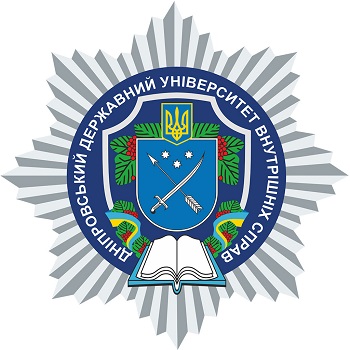THE ESSENCE OF SPECIAL JUDICIAL PROCEEDINGS AS A MANIFESTATION OF THE DIFFERENTIATION OF CRIMINAL PROCEDURAL FORM
DOI:
https://doi.org/10.32782/2078-3566-2024-4-36Keywords:
criminal procedure, differentiation of criminal procedural form, special judicial proceedings, in absentia, criminal proceedings in the absence of the suspect or accusedAbstract
The article deals with study of the essence of special judicial proceedings as a manifestation of the differentiation of the criminal procedural form. A definition of special judicial proceedings is formulated. It is determined that special judicial proceedings (in absentia) constitute a specific procedure conducted in the absence of the accused, who evades criminal liability, is declared internationally wanted, and whose rights are ensured through proper procedural guarantees. Based on the analysis of scientific sources, four approaches to understanding special judicial proceedings as a manifestation of the differentiation of the criminal procedural form are identified: 1. As an independent criminal procedure; 2. As a simplified form of criminal procedure; 3. As a complicated form of criminal procedure; 4. As a combination of simplified and complicated criminal procedural forms. It is concluded that the legislative establishment of criminal proceedings in the absence of the suspect or accused is a manifestation of the differentiation of the criminal procedural form, indicating the development of legislation towards the autonomy of certain forms of criminal proceedings and the establishment of specific procedures for their implementation. Criminal proceedings in the absence of the suspect or accused (in absentia), encompassing special pre-trial investigation and special judicial proceedings, occupy a unique “niche” in the national criminal process. It is, in our opinion, “at the intersection” of simplified and complicated criminal procedural forms. Although the legislator has not classified criminal proceedings in the absence of the suspect or accused, particularly special judicial proceedings, as one of the special procedures established in Section VI of the Criminal Procedure Code of Ukraine, this form of proceedings is indeed special. This type of proceeding is undoubtedly a distinct form of criminal procedure since its order of execution involves differences compared to the standard procedure.
References
Вирок Дніпровського апеляційного суд від 17 вересня 2024 року, справа № 201/5875/22. URL: https://reyestr.court.gov.ua/Review/121717712.
Вирок Запорізького апеляційного суду від 16 травня 2024 року, справа № 333/3218/23. URL: https://reyestr.court.gov.ua/Review/119362730.
Вирок Миколаївського апеляційного суду від 30 жовтня 2020 року, справа № 490/6729/16-к. URL: https://reyestr.court.gov.ua/Review/92552772.
Вирок Чернівецького апеляційного суду від 26 квітня 2021 року, справа № 725/5785/14-к. URL: https://reyestr.court.gov.ua/Review/96517499.
Гловюк І.В. Кримінальне провадження за відсутності підозрюваного або обвинуваченого (in absentia) у системі кримінального провадження України. Право України. 2015. № 7. С. 16–25.
Дрозд В.Г. Концептуальні засади правового регулювання досудового розслідування як стадії кримінального провадження : дис. ... д-ра юрид. наук : 12.00.09 ; ХНУВС. Харків, 2019. 495 с.
Кримінальний процесуальний кодекс України від 13 квітня 2012 року. URL: https://zakon.rada.gov.ua/laws/show/4651-17#Text.
Лобойко Л.М., Банчук О.А. Кримінальний процес : навчальний посібник. Київ : ВАІТЕ, 2014. 280 с.
Маляренко В.Т. Про заочне провадження у кримінальному судочинстві. Право України. 2004. № 9. С. 3–12.
Матвієвська Г.В. Заочне провадження як форма кримінального судочинства. Університетські наукові записки. 2013. № 3 (39). С. 347–355.
Матвієвська Г.В. Теоретичні засади застосування заочного провадження в кримінальному процесі. Науковий вісник Ужгородського університету. 2012. № 18. С. 121–126.
Нагорнюк-Данилюк О.О. Поняття, сутність і значення інституту спеціального провадження в кримінальному процесі України. Право і безпека. 2015. № 2. С. 113–120.
Оборонова І.В. Диференціація кримінального провадження в суді першої інстанції : дис. … д-ра філос. : 081 – Право ; Хмельницьк. ун-т управління та права ім. Леоніда Юзькова. Хмельницький, 2023. 250 с.
Пеліхос Є.М. Забезпечення права на захист підозрюваного, обвинуваченого при здійсненні спеціального кримінального провадження (in absentia) : дис. … д-ра філос. :081 – Право ; НАВС. Київ, 2022. 256 с.
Пєсцов Р.Г. Заочне провадження в кримінальному процесі України : дис. … канд. юрид. наук : 12.00.09 ; Нац. пед. ун-т ім. М.П. Драгоманова. Київ, 2012. 191 с.
Про внесення змін до деяких законодавчих актів України щодо припинення норм законів, схвалених 16 січня 2014 року : Закон України від 23 лютого 2014 року. URL: https://zakon.rada.gov.ua/laws/show/767-18#Text.
Про внесення змін до Кримінального процесуального кодексу України щодо заочного кримінального провадження : Закон України від 16 січня 2014 року. URL: https://zakon.rada.gov.ua/laws/show/725-18#Text.
Сокира Л.М. Спрощений порядок розгляду кримінальних справ. Прокуратура. Людина. Держава. 2004. № 9. С. 74–78.
Татаров О.В. Заочний розгляд очима Європи. Сайт «Судова влада України» (26.02.2015). URL: https://shr.od.court.gov.ua/sud1532/pres-centr/novini/156996.
Тетерятник Г.К. Уніфікація та диференціація процесуальної форми: синергетичний підхід. Верховенство права. 2017. № 1. С. 136–143.
Трофименко В.М. Теоретичні та правові основи диференціації кримінального процесу України : дис. … д-ра юрид. наук : 12.00.09 ; Нац. юрид. ун-т ім. Ярослава Мудрого. Харків, 2017. 437 с.
Трубніков В.М., Слінько Д.С. Реалізація засад кримінального провадження в процесуальній формі заочного кримінального судочинства. Вісник Харківського національного університету імені В.Н. Каразіна. 2014. № 1137. Вип. 18. С. 177–181.
Шило О.Г. До питання щодо диференціації кримінально-процесуальної форми. Право України. 2010. № 9. С. 180–186.
Fomina T., Hlobenko H., Melnyk O., Melnyk V. Differentiation of a criminal procedural form as a condition of development of modern legislation. Amazonia investiga. 2020. Vol. 9. No 28. P. 386–393. DOI: https://doi.org/10.34069/AI/2020.28.04.43.



